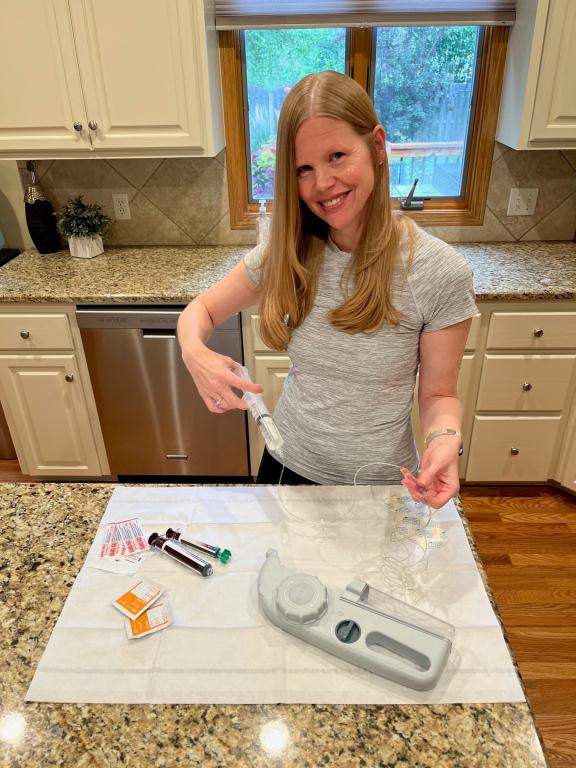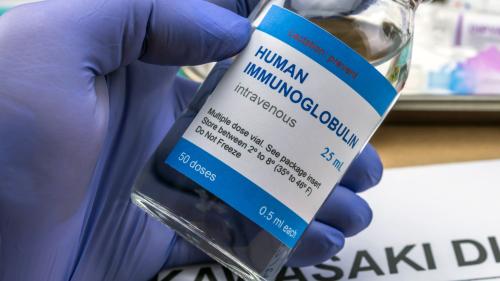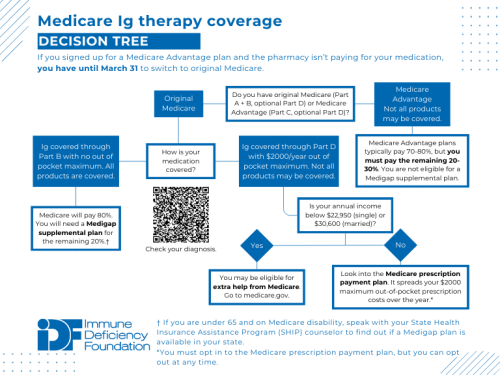
-
Understanding primary immunodeficiency (PI)

Understanding PI
The more you understand about primary immunodeficiency (PI), the better you can live with the disease or support others in your life with PI. Learn more about PI, including the various diagnoses and treatment options.
-
Living with PI
-
Addressing mental health
-
Explaining your diagnosis
- General care
- Get support
- For parents and guardians
-
Managing workplace issues
- Navigating insurance
-
Traveling safely

Living with PI
Living with primary immunodeficiency (PI) can be challenging, but you’re not alone—many people with PI lead full and active lives. With the right support and resources, you can, too.
-
Addressing mental health
-
Get involved

Get involved
Be a hero for those with PI. Change lives by promoting primary immunodeficiency (PI) awareness and taking action in your community through advocacy, donating, volunteering, or fundraising.
-
Advancing research and clinical care
-
Grants
-
IDF surveys
-
Participating in clinical trials
-
Diagnosing PI
-
Consulting immunologist
-
Clinician education

Advancing research and clinical care
Whether you’re a clinician, researcher, or an individual with primary immunodeficiency (PI), IDF has resources to help you advance the field. Get details on surveys, grants, and clinical trials.
-
Grants

Laura Rohe started using intravenous immunoglobulin (IVIG) replacement therapy at age 14, just after being diagnosed with common variable immune deficiency (CVID). The monthly infusions she received at her doctor’s office helped ward off most infections but sometimes left her with a headache, chills, and body aches. When she switched to subcutaneous immunoglobulin (SCIG) replacement therapy, her side effects subsided, and she felt more in control, being able to administer the immunoglobulin (Ig) therapy herself.
“It was completely night and day. I didn’t realize how bad I felt on IVIG. It was like a light switch turned on. My energy level was higher, I had no more sinus infections, and I had steady-state Ig levels, so I felt better,” said Rohe, a nurse and Ig replacement therapy coordinator who serves on the Immune Deficiency Foundation (IDF) Nurse Advisory Council (NAC).
Rohe’s experience illustrates the importance of taking steps to ensure that Ig therapy is safe and effective. Ig replacement therapy is the standard-of-care treatment for types of primary immunodeficiency (PI) that affect antibody levels or function. The treatment helps maintain protective levels of antibodies. Knowing how to safely navigate the administration of both IVIG and SCIG is paramount to being and feeling healthy.
IVIG safety
IVIG is administered directly into the bloodstream intravenously with one needle in the arm. A health professional such as a nurse administers IVIG to patients in a clinical setting like a hospital or infusion center or at home every 3-4 weeks.
IVIG presents a greater risk of adverse reactions because it’s administered directly into the circulatory system, as opposed to SCIG, which can take 48-72 hours to reach the bloodstream indirectly through the vascular system.
In a 2018 survey conducted by IDF, 98% of those using IVIG experienced side effects. The five most frequent were fatigue, headache, muscle ache, chills, and migraine, followed by nausea, weakness, fever, and dizziness. To mitigate those effects, healthcare providers recommend slowing the rate of infusion and drinking plenty of water the day before, the day of, and the day after infusion.
If you have reactions that cause you concern, please contact your ordering physician and tell them about your reactions so they can help you. You may need to change the product or method of administration.
“We do get a lot more system adverse reactions with IVIG—headaches, increase in blood pressure, some people get flu-like symptoms,” said Rohe. “One of the No. 1 things I tell my patients to help prevent systemic reactions like headaches is to drink a lot of water—oral hydration.”
IVIG rate and temperature are also important because headache, chills, and flu-like symptoms can occur if the infusion rate is too fast or if the Ig is too cold. Ig should be administered at room temperature, and a first-time administration rate should be slower than recommended and then increased to a rate that is tolerable. When symptoms do occur, communicate with the nurse and request that they slow down the infusion rate to alleviate the side effects.
“It’s important for patients to find out what their ‘usual’ infusion rate is and to be aware of this. We prefer running IVIG in slowly to prevent any adverse effects,” said Rohe, who added that patients should always know the brand and dose of their Ig product.
Another important safety step with IVIG is to make sure the nurse monitors blood pressure, heart rate, temperature, and respiration rate. A full set of vitals should be obtained before administration and after every rate increase. The nurse should stay with the patient during the entire administration.
“Patients should expect that an educated and experienced nurse is administering their Ig infusion,” said Rohe, who recommends finding an Ig-certified nurse if possible.
“I always tell my patients to speak up because sometimes they think, ‘Oh, this is the norm.’ If a company doesn’t have a nurse in the area, then they use a small nursing agency that may send a nurse who’s never given immunoglobulin and doesn’t even know what it is, and that is when you can get into trouble, so I encourage patients to call and speak up and talk to your doctor or your nurse at the office.
“If it’s the weekend and you’re getting it at home, you can call the specialty pharmacy provider (SPP). There is always someone on call 24 hours a day at your SPP. Most physicians’ offices, including ours, also have an on-call physician to answer urgent infusion questions or concerns.”
IVIG can also cause rare but serious health conditions and has a boxed warning for thrombosis (blood clots) and kidney dysfunction/failure, although sucrose-based products that formerly caused 90 percent of acute renal failure cases have been discontinued. All IVIG products should be administered at the lowest dose and infusion rate practicable. SCIG products do not contain a boxed warning for renal dysfunction/failure and are ideal products for use in high-risk PI patients.
“If we have a new patient and we’re trying to decide with them, do they want SCIG or IVIG, we do a thorough health history with them to find out any comorbidities they might have,” said Rohe. “If they have any heart disease or kidney disease, we would probably more likely do the SCIG route. If someone has a history of blood clots or stroke, particularly with older patients, or had a heart attack, those are also things to take into consideration.”
Rohe said her practice discourages the use of ports to administer IVIG because they can lead to infections and thrombosis. If the patient has poor venous access, they switch to SCIG and never order placement of a port.
“We have a couple of patients who came to us with ports already in place. I definitely tell them about the risk of infection and the increased risk of a blood clot. I have them watch for signs and symptoms of infection, such as fever or chills, and for thrombosis to watch for pain or swelling in an arm or leg, unexplained shortness of breath, numbness or weakness on one side of the body, or unexplained shortness of breath or chest pain/discomfort,” said Rohe.
“Also, some patients have issues with accessing their ports, for example, not getting a good blood return prior to starting the infusion and need to call the healthcare provider who placed the port with instructions on troubleshooting.”
SCIG safety
SCIG is self-administered through the skin using several small needles daily, weekly, or bi-weekly. Facilitated SCIG, which contains an enzyme that helps the body absorb the Ig, is also given every 3-4 weeks
If you choose SCIG, most specialty pharmacies will send a nurse out to train you how to administer the Ig for the first few doses, about 3-5 teaching sessions for weekly Ig infusions.
It’s important to choose the right sites for the infusion and experiment with different sites, such as the thighs, buttocks, sides, or arms. Avoid bruised or red areas, scar tissue, and tattoos. Each brand indicates the number of sites you may use, which is usually 2-4.
According to the 2018 IDF survey, the most common adverse reactions with SCIG are localized infusion site irritation, such as redness, swelling, and itching at the infusion site, fatigue, and headache. For the first administration, Rohe recommends starting out with a slow infusion rate and using an extra needle to avoid putting too much Ig in at one site and causing irritation to the skin.
Rohe also pointed out that while you don’t want any air in the line when administering IVIG, with SCIG, you should keep a little bit of air in the line just before the needle starts to avoid having the Ig wet the end of the needle. “Dry priming” helps prevent site irritation.
“This is something that even patients who’ve been doing this for 10 or 12 years forget,” said Rohe.
Needle length is also important. Too short a needle may cause site irritation. Too long a needle might go into the muscle, which is painful. Also, not all needles are interchangeable. If the pharmacy sends you the wrong ones or any other incorrect supplies, call and ask for the correct ones. For those who find needles painful, use topical numbing cream.
To have a more successful SCIG infusion, patients should:
- Drink a lot of water before, during, and after infusion.
- Use cold or warm compresses to counteract site irritation.
- Watch instructional videos on manufacturers’ sites and call the nurse line with questions.
Additional Ig safety measures
Even though anaphylactic reactions are very rare, both IVIG and SCIG treatments have the potential to cause allergic reactions so keep epinephrine available to reduce the effects of the reaction. Stop the infusion and call 911 if you experience any of the following side effects: hives all over the body, shortness of breath, wheezing, fainting, or losing consciousness.
Whether using SCIG or IVIG, nurses and/or patients should inspect the immunoglobulin vials before administration. The Ig should be pale yellow with nothing floating in it and should be marked with an expiration date. Ig should arrive in ice packs unless hand-delivered by a courier. However, it can be stored at room temperature before use.
Sterility is also important in administering Ig. All persons administering Ig should wash their hands first and wipe the site of needle insertion with antiseptic. Nurses should also wear gloves.
Follow-up
If you’re using IVIG or SCIG, visit your doctor regularly for continuous follow-ups. Routine labs to check complete blood count, comprehensive metabolic panel, kidney and liver function, and Ig levels should take place every 6-12 months, said Rohe.
Contact your provider immediately if you’ve experienced a serious medical event like a stroke or a heart attack or had cardiac surgery.
“It’s really important to notify your immunologist’s office if you have any changes in your health, as this could affect your Ig infusions. Many patients with PI see other specialists in addition to their immunologist, especially the older population, who may also see a cardiologist, pulmonologist, rheumatologist, or gastroenterologist. We all need to be on the same page and be aware of the PI patient’s entire health history. Sometimes the route of administration or infusion schedule may need to be changed,” said Rohe.
Most of all, be your own advocate and contact your healthcare provider if you’re concerned about any issue related to your infusions.
“Both IVIG and SCIG are very safe, but I always stress, ‘Call me.’ There are no stupid questions,” said Rohe.
Topics
This page contains general medical and/or legal information that cannot be applied safely to any individual case. Medical and/or legal knowledge and practice can change rapidly. Therefore, this page should not be used as a substitute for professional medical and/or legal advice. Additionally, links to other resources and websites are shared for informational purposes only and should not be considered an endorsement by the Immune Deficiency Foundation.
Sign up for updates from IDF
Receive news and helpful resources to your cell phone or inbox. You can change or cancel your subscription at any time.





The Immune Deficiency Foundation improves the diagnosis, treatment, and quality of life for every person affected by primary immunodeficiency.
We foster a community that is connected, engaged, and empowered through advocacy, education, and research.
Combined Charity Campaign | CFC# 66309




